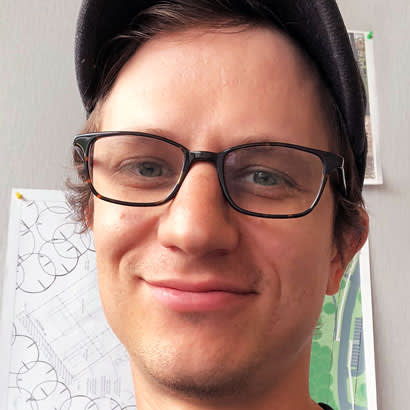
Max Madalinski didn’t anticipate a career in parks and recreation. After earning his master’s degree in ecological design in 2016, from The Conway School of Landscape Design in Conway, Massachusetts, Madalinski only knew that he wanted to work in a planning and design environment. However, an opening for an associate parks project coordinator for City of Burlington Parks, Recreation & Waterfront in Vermont, eventually, led him to the field. Now more than a year-and-half later at the agency, Madalinski is still enjoying the best of both worlds: planning and designing projects and working outdoors.
Parks & Recreation magazine recently caught up with Madalinski to discuss the most challenging part of his job, why playgrounds are vital to communities and what he deems the best part of being in the parks and recreation field.
Parks & Recreation: What’s the most challenging part about your job?
Max Madalinski: There are a lot of different projects taking place within our department that I manage, as well as projects that my teammates have to manage. On top of that, right now in the city, there are all these other construction projects being built that influence what we’re doing. The biggest challenge is time management and ensuring that everything that needs to get done is getting done. As an example, we’ve got some environmental projects going on as a result of soil contaminants. In Burlington, we have a big waterfront where there used to be a lot of petroleum-based businesses. The city has slowly taken control of these sites and converted them into parks. But any time we want to work on a new project along the waterfront, it means that we’re going to encounter soil with a history of contamination. It requires a lot of dotting the i’s and crossing the t’s on these projects to make sure that we won’t get in trouble with the state or the EPA for managing these hazardous materials incorrectly.
P&R: Why are playgrounds so important to communities?
Madalinski: I have a 3-year-old son and we spend so much time at the playground; it’s one of his favorite things to do. Playgrounds give kids the opportunity to be independent, have fun, really get them outside and moving their bodies. We are just starting to renovate a number of our playgrounds now, and we have some really exciting concepts that we’re working on, along with some new equipment that’s compelling and interesting.
P&R: How do you see playgrounds changing in the future?
Madalinski: A project that we’re working on right now is a universally accessible playground, in which everything in it is designed for children of all abilities. I think that’s been a general trend in playground design over the past decade or so.
On another note, it’s obvious that park agencies must ensure that their equipment is not going to break down, fall apart or cause unnecessary lawsuits as a result of kids getting hurt, but we also need to balance [safety and] maintenance with keeping the equipment exciting and making sure that there’s a [captivating] reason for kids to get on that equipment. Playgrounds need to be more interactive and allow kids to have some independence. Doing research on playgrounds, I’ve found myself very compelled by the adventure playground concept. While there are very few in the U.S., adventure playgrounds have been around for a while — but they have gone out of style over the past three decades in the U.S. due to liability reasons. They are really popular in Europe, and I think it’s an interesting idea that I personally would like to see more of here in the United States.
P&R: What do you appreciate most about working in parks and recreation?
Madalinski: I love that, as part of my job, I get to interact frequently with the outdoors. Even though I’m mostly a desk-based person at my job, I still get to be outside and go on site visits. On any given day, my job can involve going on a lakefront bike ride just to get from one site to the other to examine construction projects that are going on. That’s definitely one of the biggest perks of being in parks and recreation.
Vitisia Paynich is a Freelance Writer for Parks & Recreation magazine

